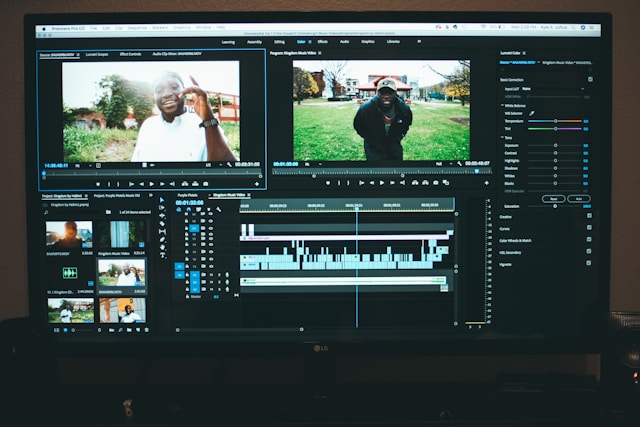Video editing is an essential skill for content creators, marketers, and aspiring filmmakers. Whether you’re making content for YouTube, social media, or professional projects, mastering video editing techniques can help you create high-quality videos that capture your audience’s attention. This guide will take you through the steps to edit videos like a pro, covering software, techniques, and best practices.
1. Choosing the Right Video Editing Software
The first step in professional video editing is selecting the right video editing software. Different tools cater to different skill levels and project needs:
- Adobe Premiere Pro – A top choice for professional video editing, offering advanced tools and flexibility.
- Final Cut Pro – Best for Mac users looking for high-performance editing software.
- DaVinci Resolve – Excellent for color grading and post-production.
- iMovie – A great beginner-friendly option for Apple users.
- CapCut – A free, mobile-friendly option for quick and easy edits.
Free and paid options vary in functionality, so choose one that suits your editing workflow and skill level.
2. Mastering the Editing Workflow
A structured editing workflow is crucial for efficient video production. Follow these steps to streamline your process:
- Organize your footage – Import and arrange clips in a clear folder structure.
- Create a timeline – Place clips in the right sequence for storytelling flow.
- Use keyboard shortcuts – Learning hotkeys speeds up the editing process.
- Trim and cut clips precisely – Remove unnecessary sections to keep the content engaging.
3. Enhancing Videos with Transitions and Effects
Adding transitions and effects can make your videos more dynamic, but they should be used strategically:
- Smooth transitions – Use cuts, fades, and wipes to enhance visual flow.
- Text and graphics – Add subtitles, titles, and animations to emphasize key points.
- Video effects – Use motion tracking, green screen effects, and overlays to enhance storytelling.
4. Perfecting Color Correction and Grading
Color correction and grading are essential for creating a professional look:
- Adjust brightness, contrast, and saturation to achieve balanced visuals.
- Use LUTs (Look-Up Tables) to apply consistent color tones across your footage.
- Match color tones when using clips shot in different lighting conditions.
5. Optimizing Audio for High-Quality Sound
Clear audio is just as important as visuals in video editing. Follow these steps to ensure high-quality sound:
- Remove background noise with audio editing tools.
- Enhance voice clarity with equalization and compression.
- Add background music and sound effects to enrich the overall experience.
- Balance audio levels so that dialogue, music, and effects don’t overpower each other.
6. Exporting Videos in the Best Quality
To ensure your videos look great across different platforms, use the right export settings:
- Choose the correct format – MP4 is the most widely supported.
- Optimize resolution – Use 1080p or 4K for high-definition videos.
- Compress without losing quality – Adjust bitrate settings to maintain quality while reducing file size.
- Use recommended settings for YouTube, Instagram, and other platforms to ensure optimal playback.
7. Pro Tips for Faster and Better Editing
Here are additional techniques to elevate your video editing skills:
- Use templates and presets to save time on repetitive tasks.
- Leverage AI-powered tools for automatic color correction, background removal, and video stabilization.
- Stay updated with video editing trends to keep your content fresh and engaging.
Conclusion
Mastering video editing requires practice, creativity, and a good understanding of editing techniques. Whether you’re working with advanced video editing software or a beginner-friendly tool, following a structured workflow will help you produce high-quality videos. Experiment with different editing styles, use professional video editing techniques, and keep refining your skills to become a pro at video editing.









